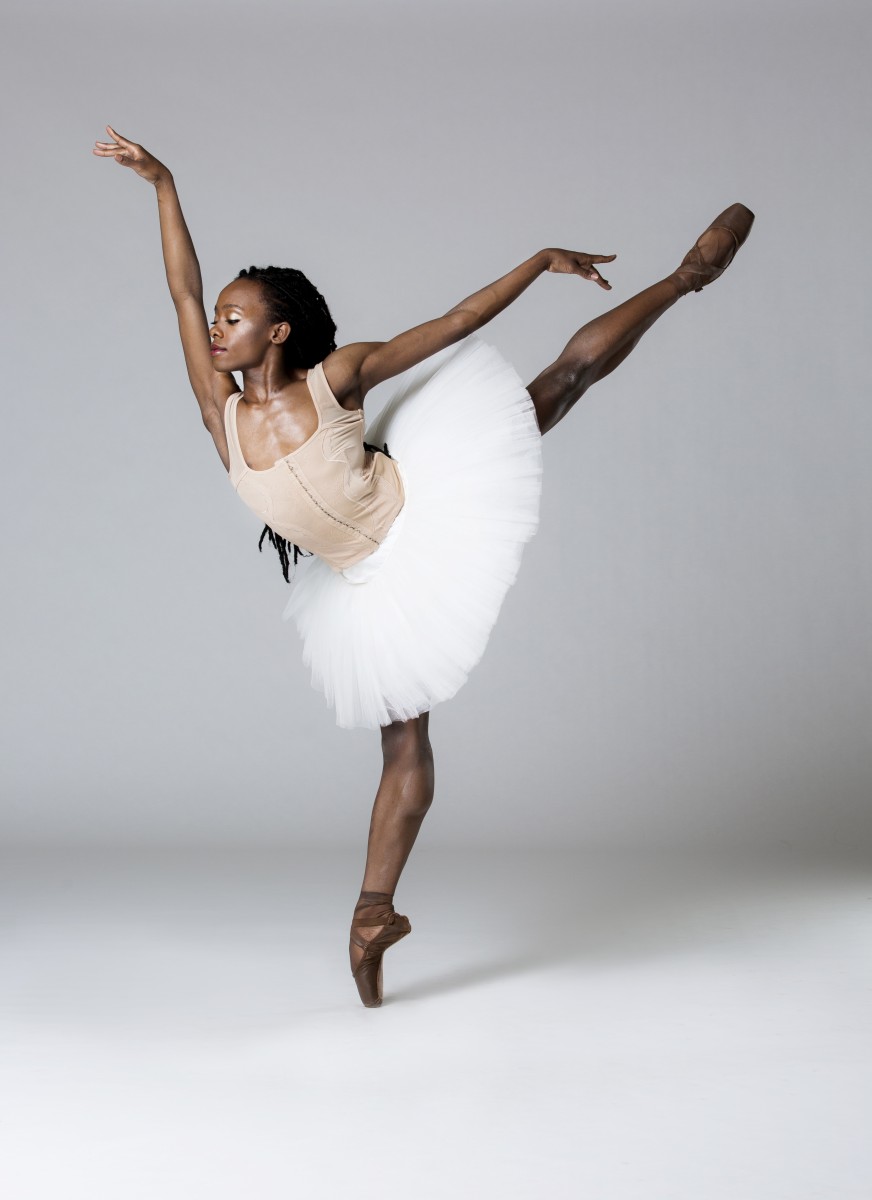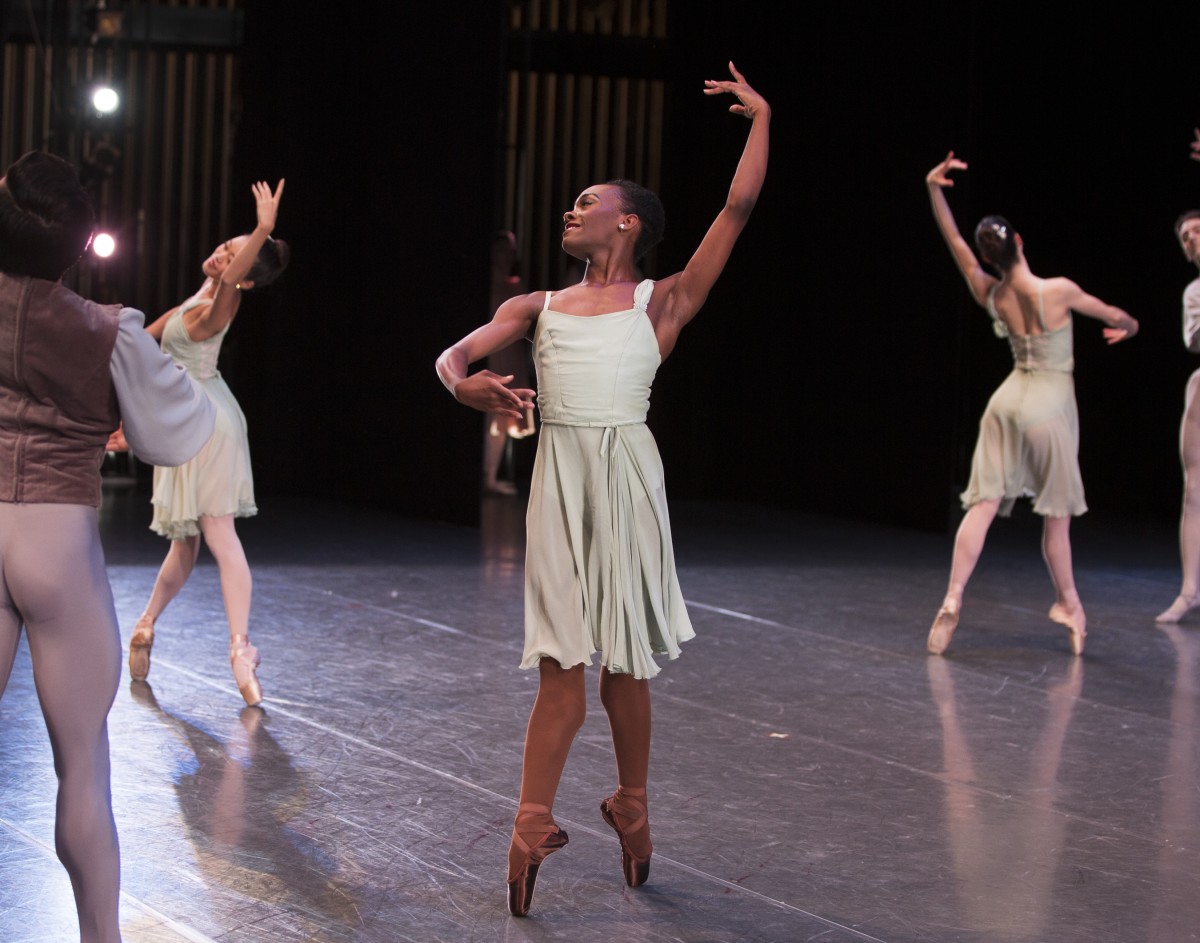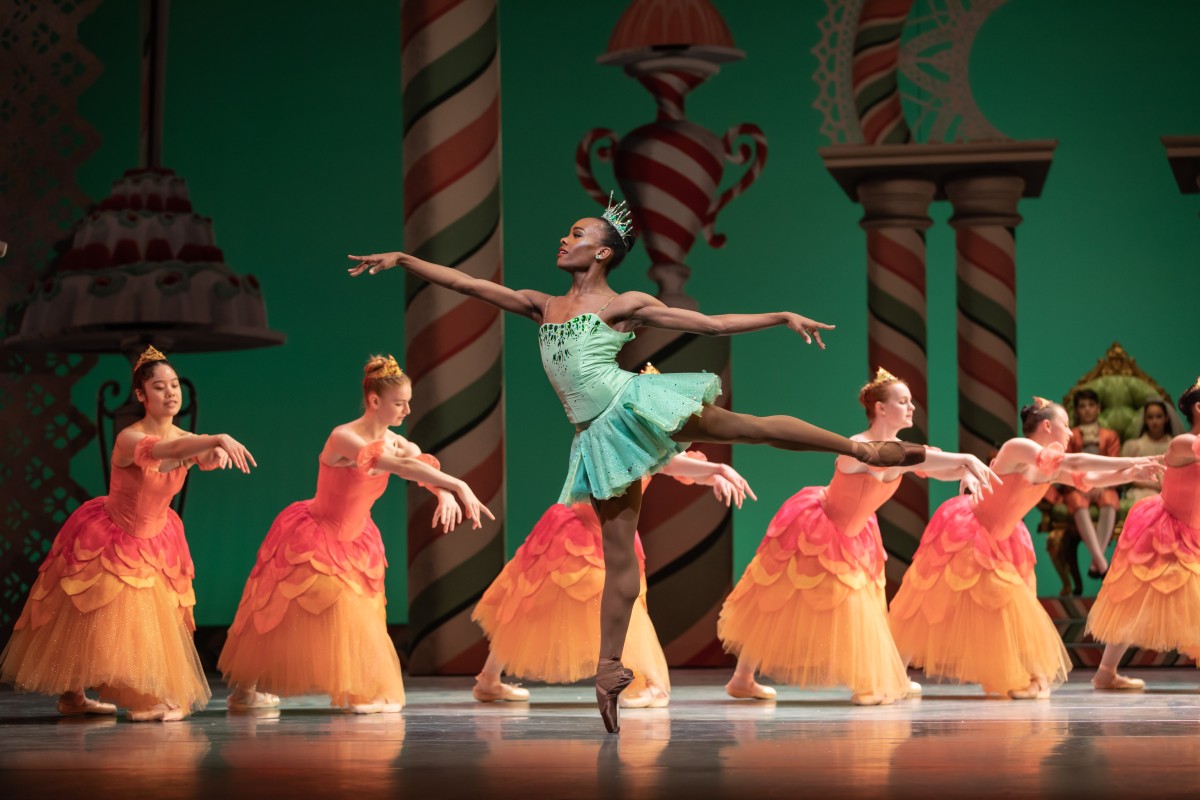
Pacific Northwest Ballet corps de ballet dancer Ashton Edwards. Photo © Angela Sterling.
Ashton Edwards: PNB’S Rising Talent Who Is Breaking Boundaries, Honoring Their Roots, And Forging Their Own Path
Meet Ashton Edwards, an artist currently breaking barriers and forging a path for themself and many more.
Ashton Edwards is a young and talented dancer with Pacific Northwest Ballet. They have received recognition for breaking barriers as a non-binary dancer performing both traditionally female and male presenting roles; and doing so extremely well. We had the chance to sit down with Ashton and talk about breaking boundaries, honoring their roots, and forging their own path.
We’ve been admiring your journey and, what seems to be, a self-possessed drive to forge your own path – from starting dance in a class predominantly of people who don’t look like you to training yourself on pointe during the pandemic. And then, as a dancer myself, I know it can be a bold move to talk to your director and ask for things you want and need. Where do you feel this bravery comes from and what would you say to other people who desire to do the same thing?
Ashton Edwards: I definitely got this bravery from watching really strong women in my life like my mom and my grandmother and my really strong aunt. They taught me courage to really fight for everything I wanted. That informed me to be myself.
[My advice is to] definitely prioritize yourself. Sometimes, what you need might be what the person next to you needs. I felt that in a major way, just knowing so many dreams could come true. You know, along with mine. There are just so many talented artists out there, we have to help each other.
It’s so true. Unfortunately the ballet world is built on systems, and full of traditions, that are problematic, often forcing Black dancers to conform to things that are uncomfortable to them. Being Queer or gender nonconforming is just now becoming part of the conversation at all. What has it been like working for a company that embraces you?
AE: It’s taught me so much hope for the future. Seeing the young ones, especially in my company and in the [PNB] school, makes me so excited for the future; to know that there’s a world where it’s not a question.
I feel like I knew [my path was different] at a really young age, and so seeing these kids being able to be themselves so early and to grow into themselves is just the most beautiful thing. I’ve learned hope and to keep going. You know, that inspires me the most, seeing them. I also know my next steps are important.
It’s made me so excited to see progress pop up around at other companies now, it’s so amazing in other schools. There are schools like Boston Ballet and San Francisco Ballet that now have some queer dancers on pointe and on flat. I just think it’s amazing.
I do too. I’m in my early thirties, and growing up dancing there was an intense pressure to ‘butch it up’, be more ‘masc’, to present in a certain way. It can stifle people’s natural gifts, so I love seeing what you’re seeing and I hope it just keeps getting better and better for all of us.
AE: That also reminds me of an answer to your previous question – what taught me this bravery? At my home studio, there were older dancers who just danced for fun; who came in for an open class. A lot of the guys actually took pointe then. Seeing that passion for dance [taught me so much].
Also, I started pointe before I got the actual job. It was a really tricky time; trying to become a professional and making this big change, but knowing that this love of movement would live on in my life forever, it was so necessary. It’s just for the love of dance.

Pacific Northwest Ballet corps de ballet dancer Ashton Edwards with company dancers in Allegro Brillante, choreographed by George Balanchine © The George Balanchine Trust. Photo © Angela Sterling.
You’ve had some really exciting recognition from the Dance Spirit cover to a New York Times article, and people following and admiring you through social media. But as you mentioned, you are still early on in your career. It’s your first year in the corps de ballet! What has it been like simultaneously trying to navigate professional life and also becoming a role model for so many?
AE: It’s been really interesting. I definitely feel the pressure at times, but it’s been really exciting. I hear so many good stories of bringing someone hope. [People saying,] I don’t dance anymore, but you’re living out my dreams now. And so this just being the beginning and getting to dance these special roles like Dew Drop and Just Peck’s The Times Are Racing – it’s really exciting and it makes me love my job a little more.
We wanted to touch on your Dew Drop premiere. It’s such an iconic role. What was that experience like?
AE: It was a dream! But, of course, I had built it up so much in my head. Moments before [it happened] I was terrified.
I have a picture on my phone, before the curtain even comes up, I’m already drenched in sweat. I’m so excited, so nervous, just warming up! The preparation was nerve-wracking, but when I got on the stage, I couldn’t feel a thing. It was just like dancing in my living room again for myself. It was wonderful. It was the most bliss I’ve ever felt on stage.
The debut was really scary but I did it again. It was on my birthday for my mom. My mom hasn’t seen me dance since I moved out here. It’s not really easy for us to align those moments, but she finally got to see me dance in such a special role to me.
I’ve known [the Dewdrop] choreography since I was at least 12 years old. It was such a dream to finally perform it, especially since at that age, there was just no way [I thought it could happen]. I learned the choreography just because I loved it. It was my wildest dream come true.
It’s amazing – I think every dancer who is a Balanchine fan dreams of doing this role. The number of times I jokingly danced it! It just wasn’t possible. To see the impossible become reality is incredible.
AE: And to dance with all my friends and build this bond with all these beautiful women. It was amazing to have their support.

Pacific Northwest Ballet corps de ballet dancer Ashton Edwards with company dancers in George Balanchine’s The Nutcracker, choreographed by George Balanchine © The George Balanchine Trust. Photo © Lindsay Thomas.
AE: I don’t know. I’m excited to be where I’m at. Here at PNB, I’m surrounded by really incredible artists every day. I live with an amazing artist, Zsilas Michael Hughes. They’re also an incredible dancer that you should check out. I am really grateful for everything I have right now and all of my means of being.
I hope I keep dancing. I want to dance forever. I hope to touch people and give back to my community. To go back to Flint and help out there as well. Do as much as I can while I’m around.
Well, I believe you will, based on what you’re already doing and your spirit, you can tell that you’re very thoughtful.
AE: I try to be.
Sitting down with Ashton was a wonderful experience. It was a reminder that change is possible, that talent can be supported and recognized, and that, although there is far to go, progress happens. There have been countless Black and Queer trailblazers that have paved the path for each and every one of us, especially those who are marginalized and it continues now. Like Ashton, I too have hope for the future.
Keep up with Ashton on Instagram here and all the happenings of Pacific Northwest Ballet here.
![]()


Follow Us
Subscribe For Updates & Giveaways!
Stay up to date with exciting original content, upcoming performances, and giveaways unique to your community and beyond!
